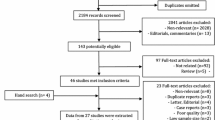Abstract
Rhabdomyolysis due to trauma and burns is an important cause of acute renal failure (ARF) secondary to myoglobinuria. To prevent morbidity and mortality from ARF due to rhabdomyolysis, early detection of ARF by monitoring the biochemical parameters such as serum creatinine, serum creatine kinase (CK), and urinary myoglobin (UM) can be helpful. The aims of the study were (1) to detect ARF due to rhabdomyolysis using serum creatinine, serum CK, and UM in trauma and electrical burn patients (2) to compare utility of these parameters in early prediction of ARF in patients of rhabdomyolysis. A total of 50 patients with trauma and electrical burns were included in the study. Serum creatinine, serum CK, and UM measurements were done at the time of admission and after 48 h. Diagnosis of ARF was made in the patients by Rifle’s criteria. The presence of significant elevation of creatinine, serum CK, and UM at the time of admission and after 48 h was compared in patients developing ARF by Fisher’s exact test. Fifteen of the 50 patients developed ARF as per the defined criteria. Of these, 9 patients (60 %) had raised level of serum creatinine above 1.4 mg% at admission and 14 patients (93.33 %) had CK level >1250 U/L at admission, whereas UM was positive in 6 (40 %) patients. Serum creatinine was significantly raised in all of the 15 ARF patients (100 %) after 48 h of admission and serum CK was raised in 14 of the 15 ARF patients (93.33 %). UM was negative in all the patients after 48 h of admission. Statistical analysis showed that rise in serum CK on admission was significantly increased in patients developing ARF as compared with serum creatinine and UM (P < 0.0001). On admission, CK is a better predictor of ARF due to rhabdomyolysis than creatinine and UM. Initial creatinine is a better predictor of ARF due to rhabdomyolysis than UM. UM assay is not a good investigation for early prediction of ARF in rhabdomyolysis.

Similar content being viewed by others
References
Melli G, Chaudhry V, Cornblath DR (2005) Rhabdomyolysis: an evaluation of 475 hospitalized patients. Medicine 84:377–385
Beetham R (2000) Biochemical investigation of suspected rhabdomyolysis. Ann Clin Biochem 37:581–587
Bosch X, Poch E, Grau JM (2009) Rhabdomyolysis and acute kidney injury. N Engl J Med 361(1):62–72
Sharp LS, Rozycki GS, Feliciano DV (2004) Rhabdomyolysis and secondary renal failure in critically ill surgical patients. Am J Surg 188(6):801–806
Reilly KM, Salluzzo R (1990) Rhabdomyolysis and its complications. Resid Staff Physician 36(8):44–52
Gitin EL, Demos MA (1974) Acute exertional rhabdomyolysis: a syndrome of increasing importance to the military physician. Mil Med 139(1):33–36
Craig S. Rhabdomyolysis in Emergency Medicine http://emedicine.medscape.com/article/827738-workup
Hamer R (1997) When exercise goes awry: exertional rhabdomyolysis. South Med J 90(5):548–551
Brancaccio P, Lippi G, Maffulli N (2010) Biochemical markers of muscular damage. Clin Chem Lab Med 48(6):757–767
de Meijer AR, Fikkers BG, de Keijzer MH, van Engelen BG, Drenth JP (2003) Serum creatine kinase as a predictor of clinical course in rhabdomyolysis: a 5 year intensive care survey. Intensive Care Med 29(7):1121–1125
Vanholder R, Sever MS, Erek E, Lameire N (2000) Rhabdomyolysis. J Am Soc Nephrol 11(8):1553–1561
Gabow PA, Kaehny WD, Kelleher SP (1982) The spectrum of rhabdomyolysis. Medicine (Baltimore) 61(3):141–152
Fernandez WG, Hung U, Bruno GR, Galea S, Chiang WK (2005) Factors predictive of acute renal failure and need for hemodialysis among ED patients with rhabdomyolysis. Am J Emerg Med 23(1):1–7
Author information
Authors and Affiliations
Corresponding author
Rights and permissions
About this article
Cite this article
Bhavsar, P., Rathod, K.J., Rathod, D. et al. Utility of Serum Creatinine, Creatine Kinase and Urinary Myoglobin in Detecting Acute Renal Failure due to Rhabdomyolysis in Trauma and Electrical Burns Patients. Indian J Surg 75, 17–21 (2013). https://doi.org/10.1007/s12262-012-0451-6
Received:
Accepted:
Published:
Issue Date:
DOI: https://doi.org/10.1007/s12262-012-0451-6




